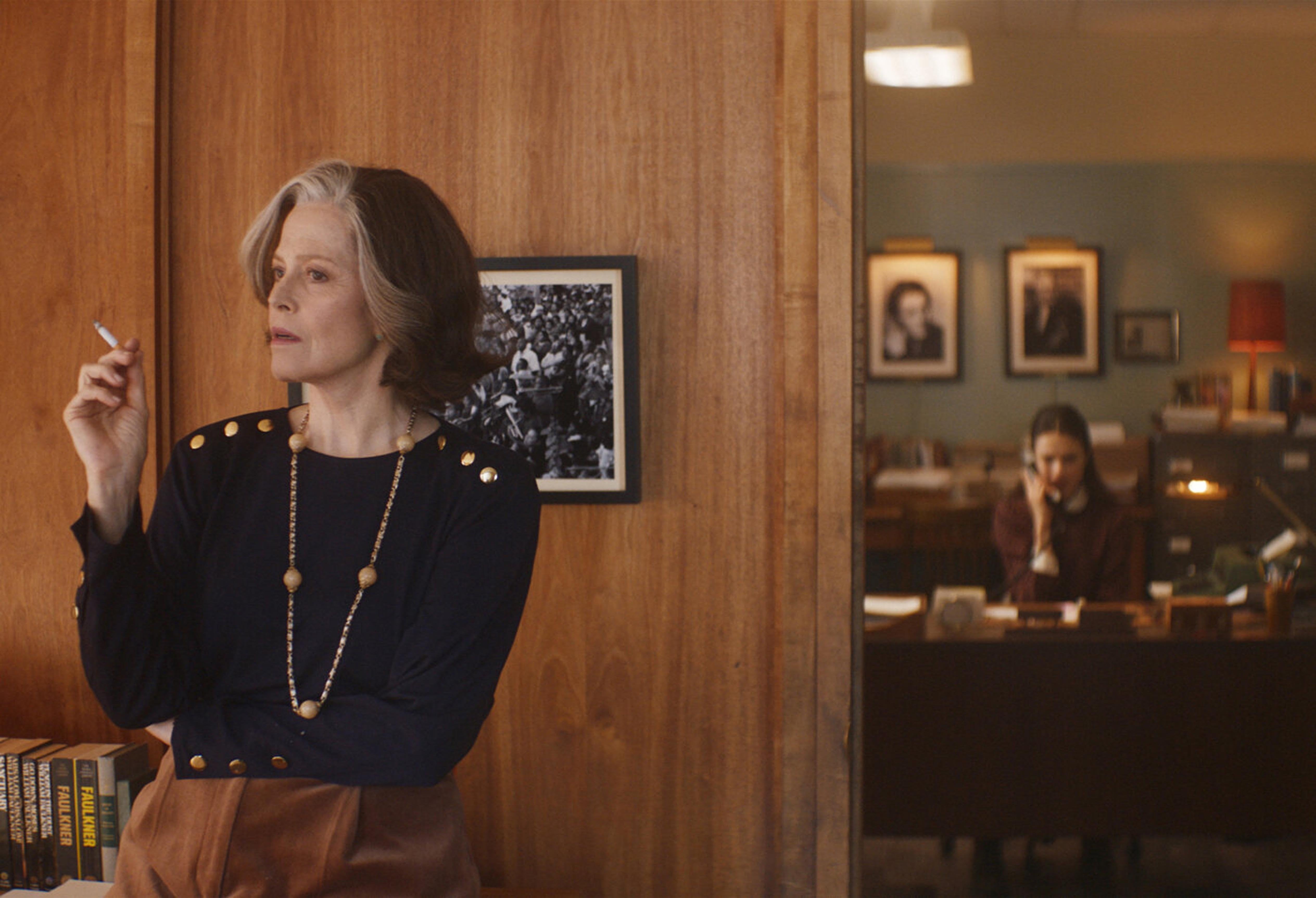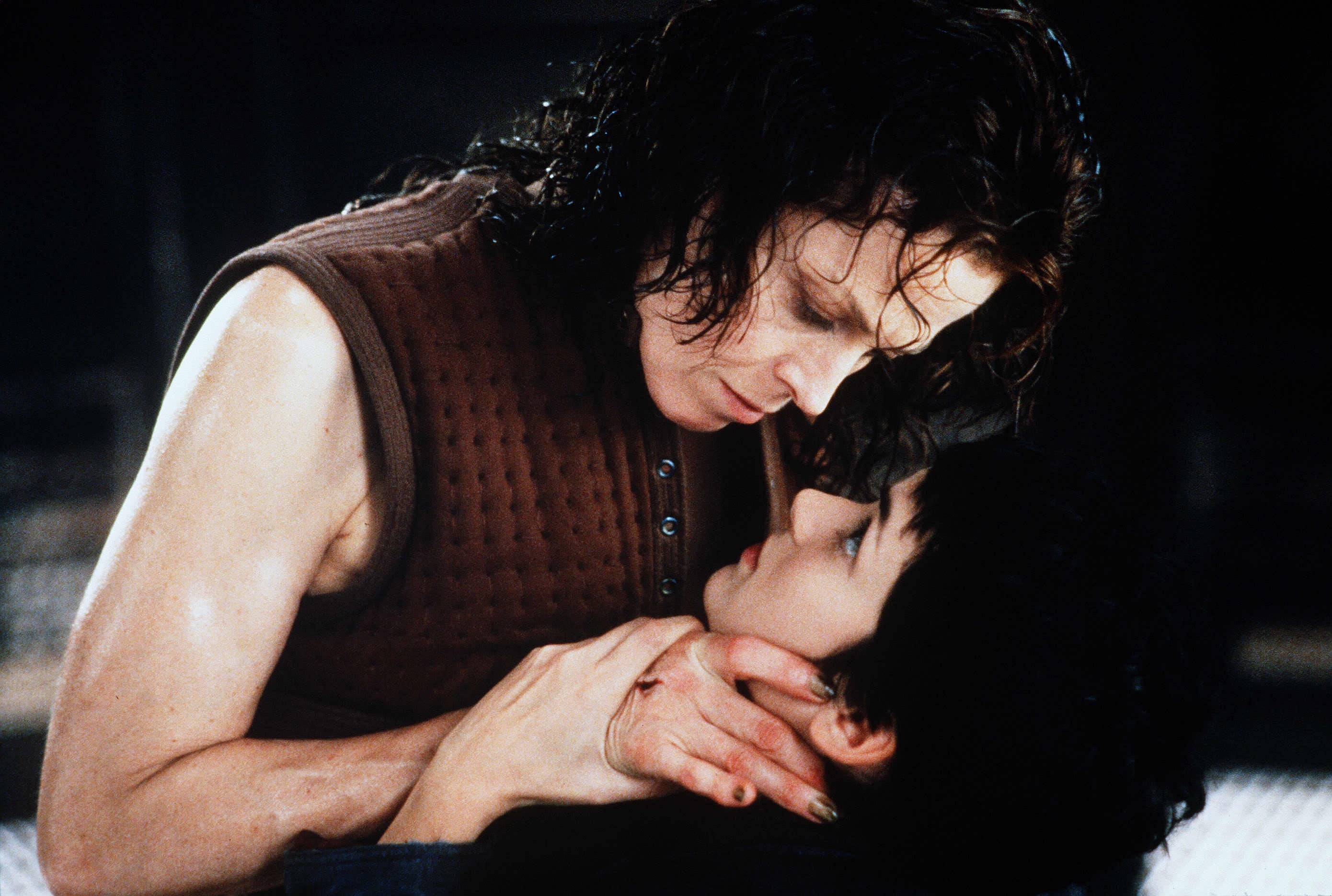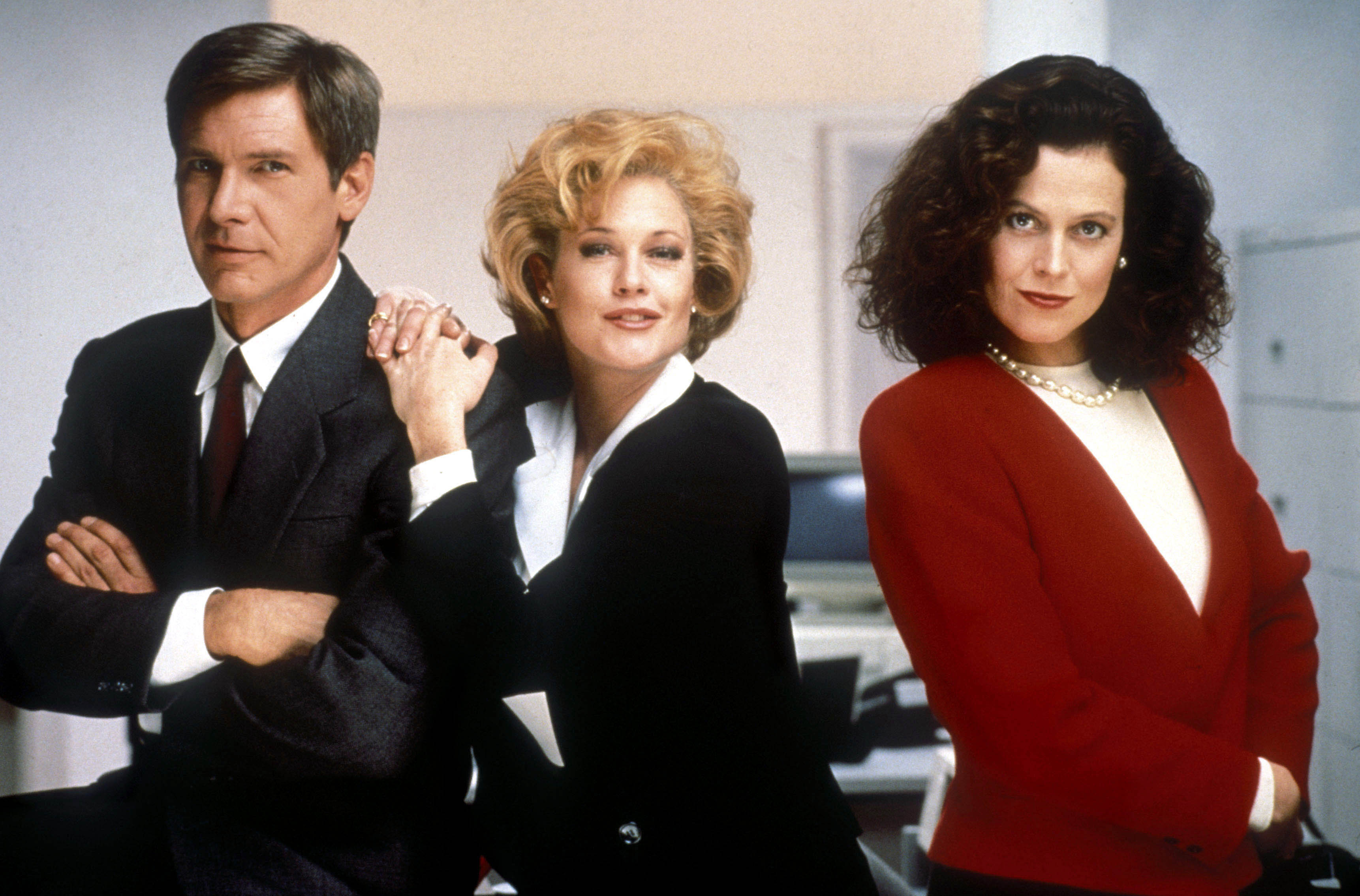Sigourney Weaver: How classmate Meryl Streep’s shadow continues to loom over her
The Alien actor is starring in My New York Year – which is out in UK cinemas this week. But despite carving her niche as one of the most important action heroines of her era, she’s overlooked, says Geoffrey Macnab

Sigourney Weaver is in typically imperious form in the new 1990s-set drama My New York Year, which is released in UK cinemas this week. She plays Margaret, the boss of the literary agency that represents reclusive writer JD Salinger. She is very tall, very imposing and very brusque. A silver streak in her hair makes her look a little like Cruella de Vil. Her dress sense seems to have been borrowed from one of those old Katharine Hepburn movies. She wears high-waisted trousers, expensive jewellery, and always seems to be dangling a cigarette in her fingers that she never inhales. “At ease!” She will bark at her terrified assistants as if she is a commanding officer who has just inspected her troops.
In truth, this isn’t one of Weaver’s more memorable movies. It’s a bland and slightly stilted story told from the point of view of a precocious young writer, played by Margaret Qualley, who has just been hired to work at the agency. Nonetheless, Weaver’s performance sticks in the mind. She brings pathos and depth to a character who, in her martini-quaffing, chain-smoking early scenes, seems like a grotesque caricature of a New York literary grande dame.
Weaver is now in her early 70s. She has never won an Oscar. She has her share of Golden Globe nominations and awards but, given the scandal currently surrounding the Hollywood Foreign Press Association (HFPA) which organises the awards, they don’t count for as much today as they once did. Stars from Tom Cruise to Scarlett Johansson have been attacking HFPA for its perceived corruption and lack of diversity while broadcaster NBC confirmed this month it won’t be showing the awards next year.
It’s instructive to compare her career with that of her exact contemporary, Meryl Streep. Both are the same age and from similar backgrounds. Their paths crossed early on, at the Yale School of Drama, where they appeared on stage together several times. Streep has three Oscars and a staggering 21 nominations – 18 more than Weaver. She still gets the first pick of all the best roles while Weaver has rarely been in serious awards contention over the last decade.
At Yale, while Streep was being given all the plum parts, Weaver was being warned by her drama teachers that she didn’t have the talent to make it professionally. She was too tall and too ungainly. They once likened her to an “unmade bed”. “I still think they probably had this Platonic ideal of a leading lady that I have never been able to live up to,” Weaver later said of her teachers. Streep, by contrast, was acknowledged as a prodigy by even her fellow students. “Slowly but surely,” her biographer Michael Schulman writes, they realised she “could outdo them in almost everything.” They trailed behind her then and, 50 years on, it sometimes seems as if Weaver is still following in Streep’s wake.
However, a strong counter-argument can also be made that Weaver is the bigger movie star. According to Box Office Mojo, her films have grossed well over $3bn in the US and Canada alone, which is more than Streep’s pictures have managed. When James Cameron’s long-delayed Avatar sequels, in which she co-stars, are finally released, the box office gap between Weaver and Streep is bound to widen yet further. Thanks to Alien and her recurring role as the talented and infinitely resourceful Ellen Ripley, she has long since carved her niche as one of the most important action heroines of her era.
Of course, it’s crude and reductive to assess Weaver’s career on the basis of the number of tickets she has sold. There is no particular sense that she ever set out to become a movie star although her mother, Elizabeth Inglis, had achieved some success on screen. Born in Colchester, Inglis had appeared on stage and on screen in England in the 1930s, playing a bit part in Alfred Hitchcock’s The 39 Steps and starring in the original stage production of Patrick Hamilton’s Gas Light. Weaver’s father was the legendary NBC TV executive, Pat Weaver, creator of The Tonight Show. However, the youthful Weaver was far more interested in literature than in show business. She was christened Susan but took her name from the flapper Jordan Baker’s aunt, Mrs Sigourney Howard, in F Scott Fitzgerald’s novel, The Great Gatsby.
Weaver may have come from a privileged background but her acting career got off to an erratic start. One of the stranger details about her is that when she was doing her BA in English Studies at Stanford University in the early 1970s, at the height of the Vietnam war, she expressed her counter-cultural credentials by living in a treehouse and turning up for classes dressed as an elf. She appeared in radical student plays that were sometimes staged in unusual locations. A profile of her in the Stanford College magazine has a vivid account of one show put on in a San Francisco high school car park.
After she left college, Weaver performed in her share of obscure off-Broadway plays, working with her former Yale College classmate Christopher Durang, a budding playwright, on a “crackpot Bertolt Brecht-Kurt Weill cabaret” called Das Lusitania Songspiel and appearing in Durang’s one-hour play, Titanic. Durang’s website has a picture of her as “the vivacious captain’s daughter”, cheerfully blurting out her “history of bizarre sexual behaviour” to an alarmed looking passenger on the deck of the doomed ocean liner.

Early on, Streep’s shadow continued to loom over Weaver. Both were cast at the start of their film careers in Woody Allen movies. Weaver had a blink and you’ll miss her cameo as Allen’s date at the end of Annie Hall (1977). She is seen for a few seconds alongside the controversial actor-director-comedian outside a cinema showing Marcel Ophuls’s wartime documentary about France during the Nazi occupation, The Sorrow and the Pity. You half suspect that Allen only cast her because she was so tall – and so she could tower over him in comic fashion in long shot.
When Streep appeared in Manhattan (1979) two years later, she had a much more prominent part. She played Allen’s embittered ex-wife, now writing a book about their turbulent marriage and who has come out as a lesbian since leaving him. Streep steals her scenes with Allen – and he lets her get away with it. The film was far more useful for her as a calling card than Annie Hall ever was for Weaver.
Director Ridley Scott told Entertainment Weekly that he first considered Weaver, then in her late 20s, for her breakthrough role as Ripley in Alien after a tip-off from Warren Beatty. “I went and met with her. She appeared – she had an afro, she had high heels on, [so] she was like, 7-foot-6. It felt like I was going out for dinner with Mummy,” Scott later remembered. He hired her “because of her strength and intelligence”.
She was playing a part originally written for a male actor: one of the most resourceful crew members aboard the space ship Nostromo after the malevolent creature explodes out of John Hurt’s stomach and goes on its killing spree. “The idea of making the hero a heroine was truly a masterstroke because, of course, we fully expect Sigourney to be the first one to go, but this story is different. Sigourney was great because she has such presence and authority,” Scott said of his star’s breakthrough performance.

Weaver’s later remarks about taking on the role as Ripley are also revealing. By her own admission, she told Stanford Magazine, she was “sort of a snob and didn’t want to do a science fiction movie”. The way she overcame her aversion to sci-fi was to identify Ripley with the literary and stage figures she had most admired. She eventually decided to play the character as if she was an outer space equivalent of Viola in Shakespeare’s Twelfth Night, the shipwrecked young woman, who passes herself off as a man.
She was brilliant in the film – and in its sequels. She played Ripley with such ferocity and commitment that there was never any sense she was slumming it, doing a genre movie under sufferance. You can’t help but admire the ruthless, steely determination with which she blasts away at the Alien Queen’s eggs at the end of Cameron’s Aliens (1986) before eventually flushing the monster through a shaft into outer space.
Inevitably, the Alien series still defines Weaver’s career. You’d far rather see her in full armoured Ripley mode, yelling “get her away from her you bitch” at her reptilian antagonist than listen to her making high-minded literary small talk in My New York Year. Nonetheless, she has given fine performances in plenty of other movies in all conceivable genres. There have been relationship-based dramas like Ang Lee’s The Ice Storm and sci-fi comedies like Galaxy Quest. She revelled in the gooey, slapstick inanity of Ghostbusters and made an unlikely foray into the erotic thriller realm with Half Moon Street.

She did romcoms (Heartbreakers), serial killer movies (Copycat), office comedies (Working Girl), low budget indie dramas (Tadpole), and films dealing with autism (Snow Cake). She was understated but very moving as the grandmother looking after the kid with the dying mother in A Monster Calls. She held her own with all the hairy primates when cast as conservationist Dian Fossey in Michael Apted’s Gorillas in the Mist.
Weaver doesn’t have her old classmate’s facility for putting on extravagant foreign accents. For whatever reason, her films haven’t generally gained as much favour with critics and awards voters as those made by Streep. Nonetheless, she is a pioneering figure who gatecrashed the world of the action movie and transformed ideas about gender and machismo in the process. Even today, more than 40 years after the first Alien film, she is performing physical feats well beyond the capacity of most of her contemporaries.
According to one recent report, while making the latest batch of Avatar movies, Weaver shot multiple scenes underwater and was trained by a specialist military coach to hold her breath, “after a big breath of supplemental oxygen”, for six minutes. Could Streep do the same? One very much doubts it.
‘My New York Year’ is released on 21 May. ‘Avatar 2’ is due out next year



Join our commenting forum
Join thought-provoking conversations, follow other Independent readers and see their replies
Comments